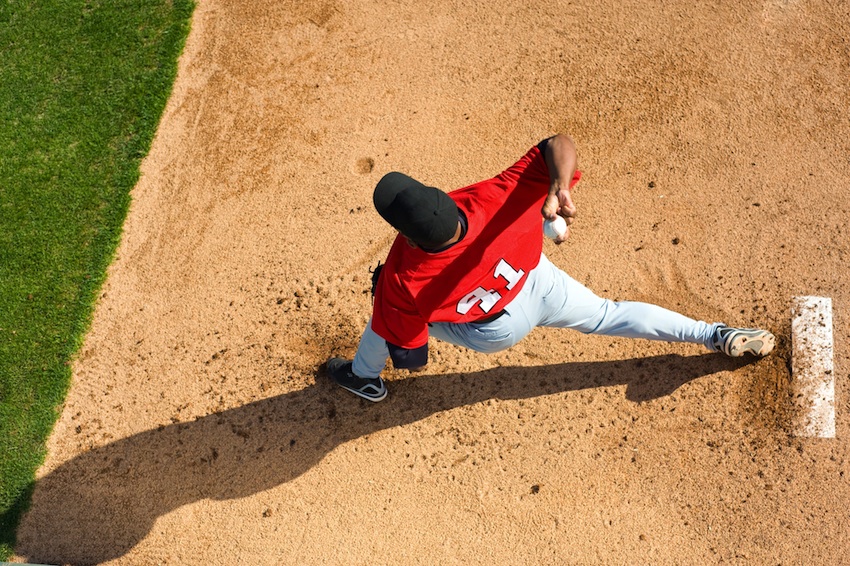Researcher Says Humans Are Unique in Their Throwing Abilities

Baseball pitcher image via Shutterstock
When you watch your favorite pitcher throw a 100 mph strike, you may thinking about his impressive strength. But Neil Roach, a recent Harvard graduate, is much more concerned with something else: evolution.
In a study published in June in Nature, Roach discusses the ties between throwing with speed and accuracy — which is a uniquely human ability— and evolution. For 1.5 million years, our ancestors hunted with nothing more lethal than a pointed wooden stick. Throwing, then, was necessary for survival.
In a report for Harvard Medical School, Roach explains his initial interest in the evolutionary ability to throw:
“When we started this research, there were essentially two questions we asked. One of them was: Why are humans so uniquely good at throwing, while all other creatures, including our chimpanzee cousins, are not?” he says. “The other question was: How do we do it? What is it about our body that enables this behavior, and can we identify those changes in the fossil record?”
Roach started his study by working with chimpanzees, which are our closest relatives. According to the study, although chimps usually throw objects underhand, they throw overhand on occasion. Roach says that when they do, however, their aim is at best less accurate and powerful than that of the average Little League pitcher. The reason why chimps usually don’t throw overhand is because of their anatomy, which causes them to throw with a straight elbow. If we couldn’t bend their elbows, our throwing capabilities would likely be restricted, too. Roach also worked with the Harvard baseball team for his study, making them wear braces to limit their movements in order to study the human body’s ability to throw a baseball.
In his research, Roach found that humans endured physical changes over the years, which helped us to be able to throw objects better than any other species. The lowering and widening of the shoulders, the expansion of the waist, and the twisting of the humerus were all important factors. Roach believes that these changes probably came about because of the need for humans to hunt effectively in order to get to the top of the food chain, which required throwing objects very hard and very fast.
Ultimately, the study determined that because of the slingshot-like action of the shoulder, humans are uniquely able to throw. But as Roach details in the Harvard report, this brings to light a hotly debated question in sports: Are we doing too much with our bodies? In the report, he says:
“I think it’s really a case of what we evolved to do being superseded by what we’re now asking athletes to do. Athletes are overusing this capability that gave early humans an evolutionary advantage, and they’re overusing it to the point that injuries are common.”


